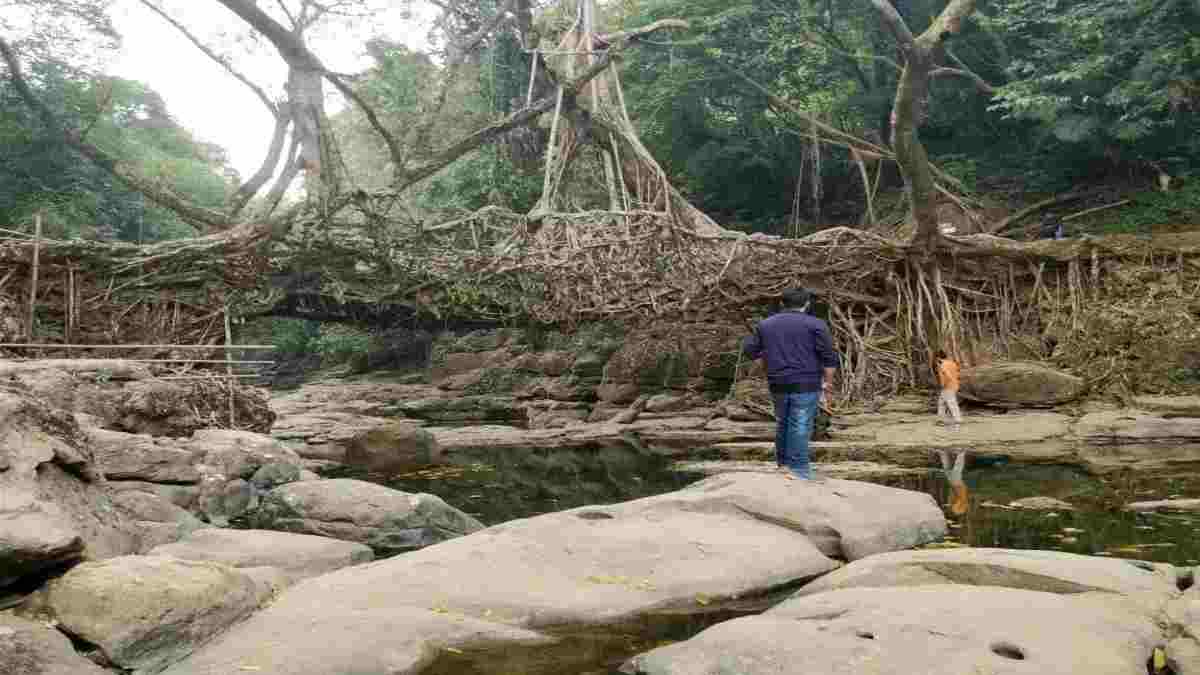"The living root bridges stand out not only for their exceptional human-environment symbiotic interaction, but also for its pioneering usage for connectivity and resilience
Digital Desk: The Living Root Bridges of Meghalaya, which may be found in over 70 communities around the state, have been tentatively included to the UNESCO World Heritage Sites list.
Meghalaya Chief Minister Conrad K Sangma tweeted his delight at the inclusion of the famed living root bridges on the United Nations Educational, Scientific, and Cultural Organization's tentative list of world historic site, he stated, "I am thrilled to announce that our 'Jingkieng Jri: Living Root Bridge Cultural Landscapes of Meghalaya' has been included in the @UNESCO World Heritage Site tentative list."
[embed]https://twitter.com/SangmaConrad/status/1508423729876938755?ref_src=twsrc%5Etfw%7Ctwcamp%5Etweetembed%7Ctwterm%5E1508423729876938755%7Ctwgr%5E%7Ctwcon%5Es1_&ref_url=https%3A%2F%2Fwww.indiatvnews.com%2Fnews%2Findia%2Fmeghalaya-living-root-bridges-in-unesco-world-heritage-site-jingkieng-jri-east-khasi-hills-west-jaintia-hills-latest-news-updates-conrad-k-sangma-2022-03-30-766585[/embed]
Meghalaya's Forest and Environment Minister James K. Sangma in a series of tweets said, "I am thrilled to announce that our 'Jingkieng Jri : Living Root Bridge Cultural Landscapes of Meghalaya has been included in the UNESCO World Heritage Site tentative list
"The living root bridges stand out not only for their exceptional human-environment symbiotic interaction, but also for its pioneering usage for connectivity and resilience and the necessity to take sustainable methods to balance economy and ecological," Sangma stated.
The Root Bridges, also known as jingkieng jri locally, have roots that form a basic suspension bridge spanning a stream or river. They are cultivated over a period of 10 to 15 years by training the ficus elastica tree on both sides of water bodies.
There are now over 100 known living root bridges dispersed throughout 72 communities in the state.
Also Read: Former journalist turned terrorist among 2 killed in srinagar encounter
The Root Bridges can accommodate up to 50 people.
These root bridges span rivers, linking one community to the next. According to environmentalists, the Living Root Bridges demonstrated the essential human value of living with awareness, preservation, and respect for all life. There are no trustworthy documents indicating when the indigenous tribals created this living construction.
A National Convention on the Root-bridges was held here last year, when experts presented their findings of unusual species of orchids, amphibians, and animals discovered on these root-bridges.
Because of its topography, visual splendour, and greenery, Meghalaya is sometimes compared to Scotland.

Leave A Comment